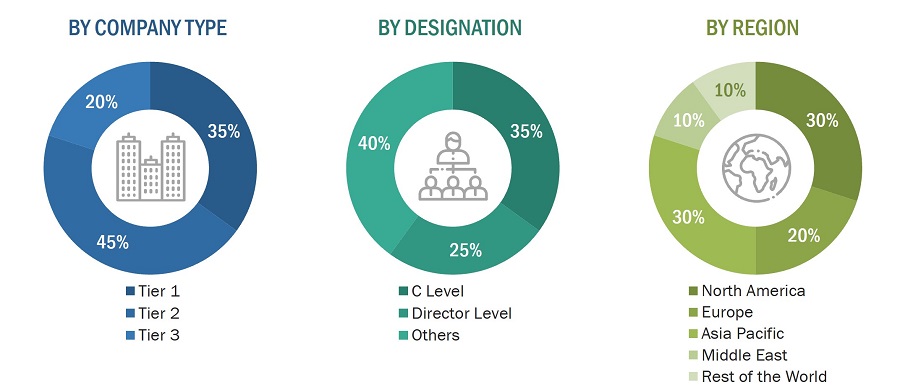The fighter jet market is expected to see significant growth over the coming years, driven by increasing global security concerns and a growing demand for advanced military aircraft. A report by MarketsandMarkets projects that the market will grow. The next step was to validate these findings, assumptions, and sizing with industry experts across the value chain through primary research. Demand-side analyses were carried out to estimate the overall size of the market. Both top-down and bottom-up approaches were employed to estimate the complete market size. Thereafter, market breakdown and data triangulation were used to estimate the size of segments and subsegments.
• Download Informational PDF Brochure :-
https://www.marketsandmarkets.com/pdfdownloadNew.asp?id=234906394
One of the main drivers of this growth is the increase in military spending by various countries around the world. With a growing focus on global security, countries are looking to upgrade their defense capabilities, and fighter jets are a key part of this. In addition, the emergence of new threats, such as cyber warfare and terrorism, is also driving demand for advanced military equipment.

Another factor driving growth in the fighter jet market is the increasing demand for unmanned combat aerial vehicles (UCAVs). These aircraft are becoming increasingly popular for military applications, as they allow for greater flexibility and lower risk to human life. As a result, many defense contractors are investing heavily in the development of UCAVs, which is expected to drive growth in the overall fighter jet market.
The market is also being driven by technological advancements in the field of aviation. Advances in materials science, for example, are enabling the development of lighter and more durable fighter jets. In addition, advancements in engine technology are increasing the range and speed of fighter jets, making them more versatile and effective in combat situations.
Secondary Research
In the secondary research process, various secondary sources, such as D&B Hoovers, Bloomberg, Business Week, and different magazines were referred to identify and collect information for this study. Secondary sources also included annual reports, press releases & investor presentations of companies, certified publications, articles by recognized authors, and research papers.
Primary Research
Extensive primary research was conducted after acquiring information regarding the Fighter Jet market scenario through secondary research. The market for fighter Jet is being driven by a range of stakeholders, including aircraft manufacturers, fighter Jet developers, infrastructure providers, and governments.
Despite these challenges, the fighter jet market is expected to see significant growth over the coming years, driven by increasing global security concerns, technological advancements, and a growing demand for advanced military equipment. This is creating opportunities for both established players in the market and new entrants, who are looking to capitalize on the growing demand for fighter jets around the world.
Market Size Estimation
Both the top-down and bottom-up approaches were used to estimate and validate the total size of the fighter jet market. These methods were also used extensively to estimate the size of various subsegments in the market. The research methodology used to estimate the market size includes the following:
- The key players in the industry and markets were identified through extensive secondary research.
- The industry’s supply chain and market size, in terms of value, were determined through primary and secondary research processes.
- All percentage shares, splits, and breakdowns were determined using secondary sources and verified through primary sources.
Data Triangulation
After arriving at the overall market size from the market size estimation process, the total market has been split into several segments and subsegments. To complete the overall market engineering process and arrive at the exact statistics for market segments and subsegments, the data triangulation procedure has been implemented, wherever applicable. The data has been triangulated by studying various factors and trends from both the demand and supply sides. Along with this, the market size has been validated using both top-down and bottom-up approaches.
Report Objectives
- To define, describe, segment, and forecast the size of the fighter Jet market based on type, take-off and landing and region.
- To forecast the size of different segments of the market with respect to five key regions, namely, North America, Europe, Asia Pacific, Middle East, and RoW, along with their key countries
- To identify and analyze the key drivers, restraints, opportunities, and challenges influencing the growth of the market.
- To identify technology trends currently prevailing in the fighter Jet market
- To analyze micromarkets with respect to individual growth trends, prospects, and their contribution to the overall market
- To analyze opportunities in the market for stakeholders by identifying the key market trends
- To profile the leading market players and comprehensively analyze their market share and core competencies.
- To analyze the degree of competition in the market by identifying the key growth strategies, such as acquisitions, new product launches, contracts, and partnerships, adopted by the leading market players.
- To identify detailed financial positions, key products, and unique selling points of the leading companies in the market
- To provide a detailed competitive landscape of the market, along with a ranking analysis, market share analysis, and revenue analysis of the key players
Media Contact
Company Name: MarketsandMarkets™ Research Private Ltd.
Contact Person: Mr. Aashish Mehra
Email: Send Email
Phone: 18886006441
Address:630 Dundee Road Suite 430
City: Northbrook
State: IL 60062
Country: United States
Website: https://www.marketsandmarkets.com/Market-Reports/fighter-jet-market-234906394.html

